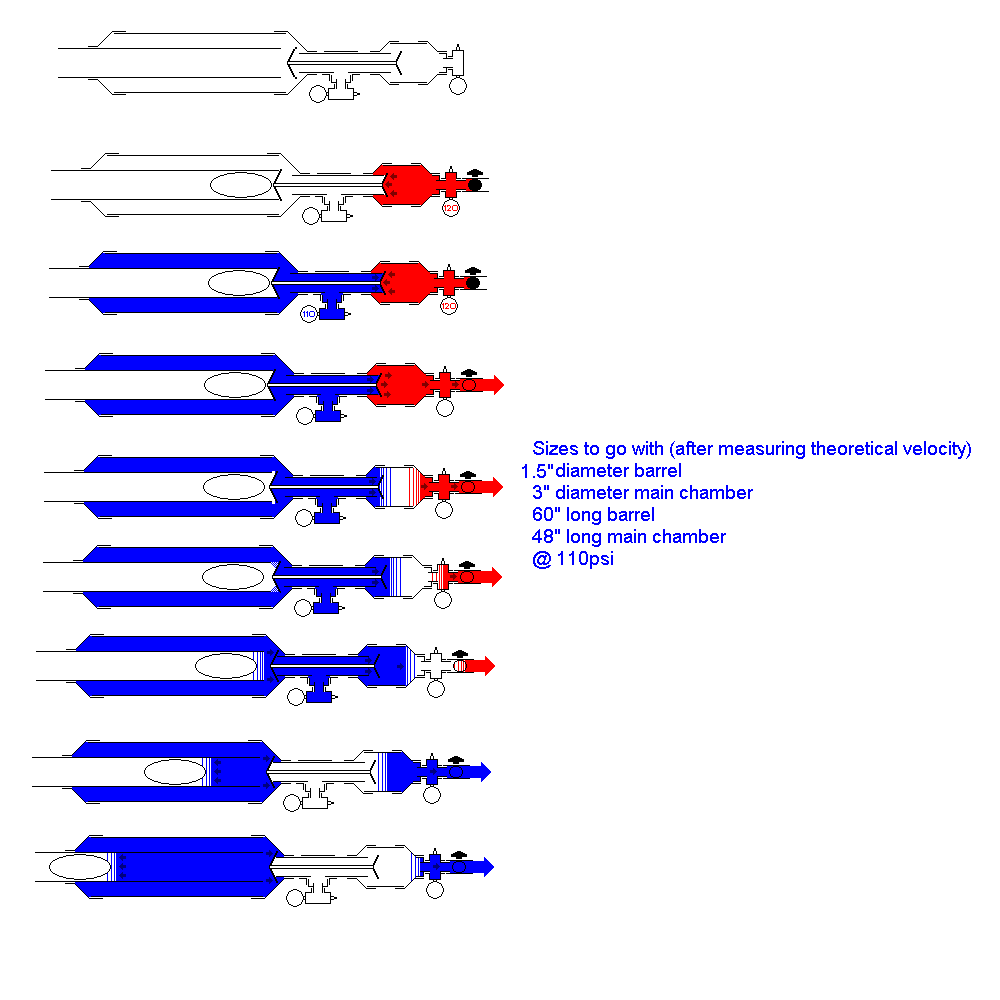Page 1 of 1
Would this design work?
Posted: Mon Feb 05, 2007 8:50 am
by Cojaro
I was just wondering. The picture should be self-explanatory.
Blue = air @ 110psi
Red = air @ 120psi

Posted: Mon Feb 05, 2007 9:10 am
by jrrdw
Looks like it will. Why use two different pressure's though?
Posted: Mon Feb 05, 2007 10:28 am
by Cojaro
jrrdw wrote: Why use two different pressure's though?
If the pressure on both sides of the "piston"(though it's more of a cap or top) is at equilibrium, then the cannon has the chance to misfire, either from being jolted, dropped, or a possible air leak that might make the smaller chamber's psi less than the larger's, which would also cause a misfire.
The pressure is greater in the smaller chamber in order to keep the "piston" closed.
Posted: Mon Feb 05, 2007 2:55 pm
by imablackskater
why wouoldnt you just use a normal piston valve
Posted: Mon Feb 05, 2007 3:25 pm
by iknowmy3tables
this looks an over complicated coaxle piston
Posted: Mon Feb 05, 2007 3:42 pm
by LGM
Yes, I think that would work. However, the greater pressure on the pilot side is probably unnecessary. You only have to worry about misfires if you are carrying it around for an extended period of time while loaded. Not sure why you would be doing that outside of paintball.
Posted: Mon Feb 05, 2007 4:03 pm
by dgr-c
I agree with the comments regarding no need for two different pressures. It does look like a design that has minimal pilot volume losses and a rapidly open valve. If you can manage the complexities of the multiple seals, it looks like a pretty potent spudchucker.
Good luck.
Posted: Mon Feb 05, 2007 10:36 pm
by iknowmy3tables
the seals might also slow down the piston, just make a semi sealed piston so air bleeds into the chamber, just like a coaxle
Posted: Tue Feb 06, 2007 5:44 pm
by alextheametuer
i think it will work but why not have just make it simpler with just one psi
Posted: Wed Feb 07, 2007 3:07 pm
by Cojaro
OK, I don't see why some of y'all are suggesting one psi. If I don't have the smaller chamber at a higher psi than the main chamber, then the greater pressure in the main chamber will force the piston to move towards the end of the gun and thus firing the gun.
The smaller chamber's pressure in hold the piston seal against the (lesser)pressure of the main chamber. If it were the other way around, it would fire!
Posted: Wed Feb 07, 2007 6:09 pm
by VH_man
Thats exactly how a coaxial works, exept it relies on the properties of surface area. theres some thread on spudtech that explains it all.....
Posted: Wed Feb 07, 2007 6:27 pm
by LGM
There isn't a greater pressure in the main chamber, it's the same. The piston is held on by the vacum created by the unpressurized barrel.


